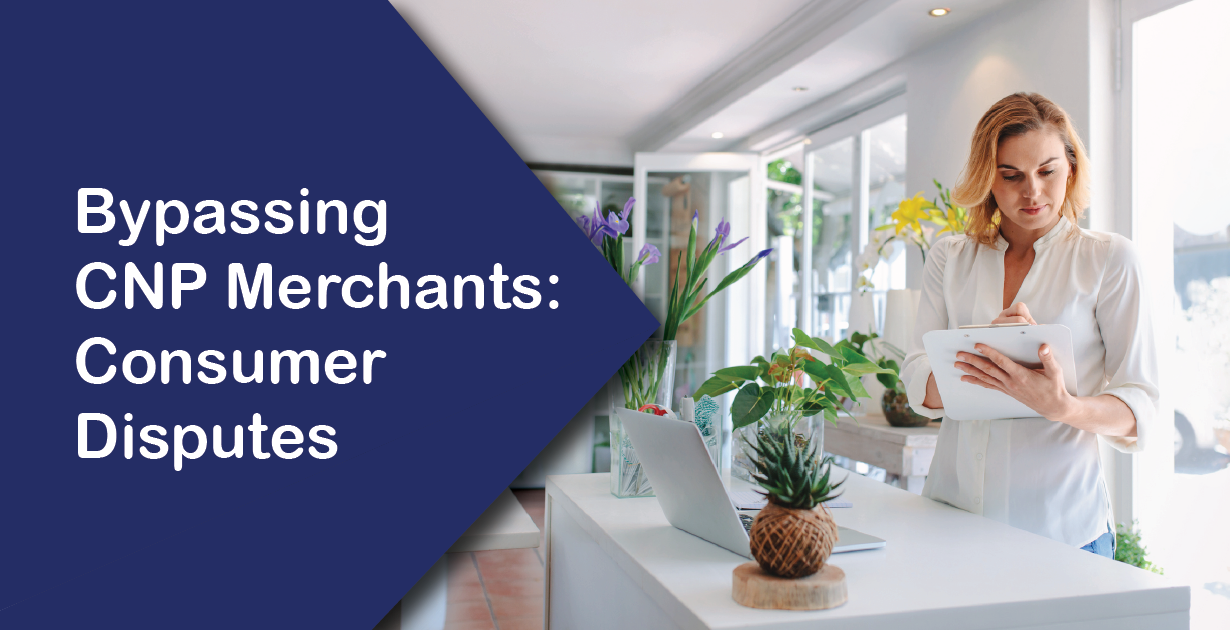
As more retailers implement omnichannel marketing to meet consumer demand, they are learning a hard truth. The card not present (CNP) business model, while enabling consumers to shop when they want, where they want, and how they want can break down as soon as a consumer files a
chargeback
with their issuer.
The consumer typically bypasses the CNP merchant and contacts their card-issuing bank to dispute a transaction, because in the CNP model they don’t even perceive a relationship with the merchant when making a purchase.
With a few clicks or swipes, consumers can make a purchase without ever communicating with the merchant. This casual business model collapses as soon as the consumer has a problem with their purchase, because they don’t know whom to contact or simply don’t trust their email will be answered with their grievance properly addressed. This establishes an environment that supports confusion, mistrust, and ultimately, unnecessary chargebacks.
When a consumer wants to challenge a transaction, now they can simply respond to the
dispute charge
link in their online credit card statement. Consumers perceive this as the only way they can remedy their dissatisfaction with their purchase.
It’s time to fix this broken and inefficient dispute process. To do this, merchants must understand why chargebacks are being filed and commit to open communication between themselves and consumers.
Why Do Consumers Dispute Charges?
Many consumer-initiated transaction disputes are due to two basic reasons:
- Unrecognized purchases
- True fraud cases
Often, unrecognized charges are the result of unclear or missing information. To avoid consumers defaulting to simply filing a chargeback, merchants should provide detailed transaction information in a confirmation email. Additionally, providing accurate billing descriptors can help reduce any confusion the consumer may experience on reading their statement.
The Verifi-sponsored Javelin Strategy & Research report,
The Chargeback Triangle
, provides insight into whom the consumer holds responsible when they dispute a transaction. When consumers are confused with a credit card charge or have issues with their purchase, they often hold the merchant accountable.
- In 66% of non-fraud transaction issues, consumers blame the merchant
- In 56% of fraud-related issues, consumers blame the merchant
In these situations, consumers bypass the merchant and work directly with their issuer, even when the problem could be fixed quickly by dealing directly with the merchant. To end this inefficient and costly cycle of often unnecessary disputes, merchants must establish a relationship with their consumers.
By connecting with consumers, merchants will not only prevent chargebacks, they’ll improve customer loyalty and longevity. Among merchants that track post-chargeback activity, 62% of consumers decreased their patronage with these merchants after they filed a chargeback. This lost business can become even a bigger issue if it escalates to negative social media reviews, resulting in brand damage.
Along with unrecognized charges, merchants also lose revenue due to friendly fraud and true fraud chargebacks. A key issue is that the lines between friendly fraud and true fraud can be quite blurry. Consider these examples:
- The consumer doesn’t remember making the purchase
- The item wasn’t delivered
- The consumer returned the item and did not receive a refund
- The credit card was compromised
- The order was cancelled but the item was still delivered
- The consumer regrets the purchase
- The consumer’s family member made an unapproved purchase
- The consumer has a premeditated intention not to pay
- The consumer wants to discontinue recurring business with the merchant
These examples highlight how easy it is for consumers to dispute transactions, especially with CNP merchants. According to
The Chargeback Triangle
report, CNP merchants face 34% more friendly fraud chargebacks than card-present merchants. The nature of digital and in-app purchases allows the consumer to be predominantly anonymous, which makes it difficult for the merchant to confirm the validity of the purchase. In addition, the consumer doesn’t have to provide an explanation for the chargeback in a face-to-face meeting, which makes the process very easy for them.
What Should Merchants Do to Prevent Chargebacks?
To prevent chargebacks, merchants need to establish the best business practices of maintaining clear, open communication with consumers. Ideally, to reduce and even stop chargebacks, merchants and issuers must work together to share information and communicate openly.
In 8 out of 10 cases, when a consumer contacts the merchant about a transaction issue, the dispute does not result in a chargeback. The best way to achieve this level of communication is with advanced payment solutions that provide consumers with the information they need to resolve a dispute before it escalates into a chargeback.
Contact us
to learn how Verifi can provide the tools that you need to open the lines of communication with consumers and issuers.